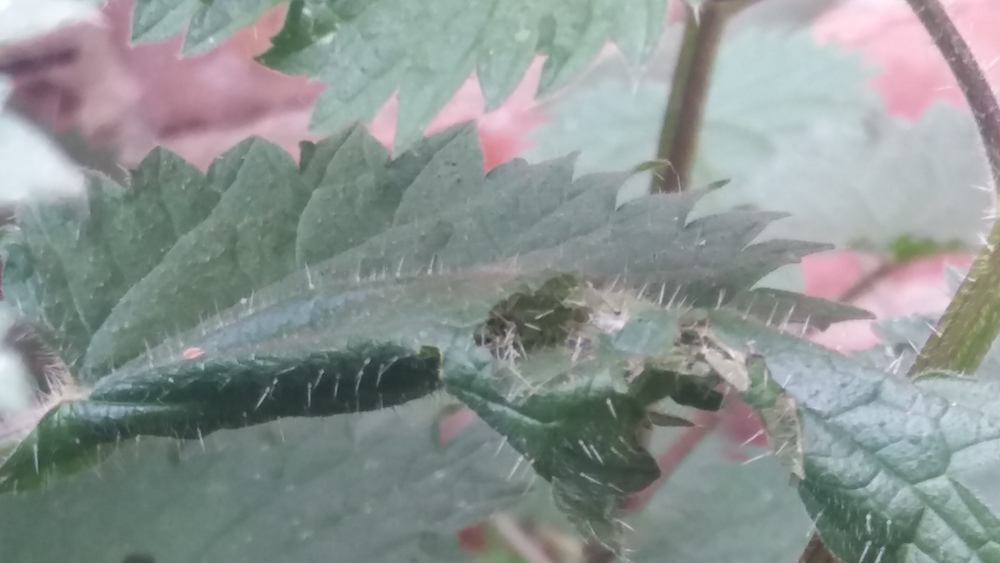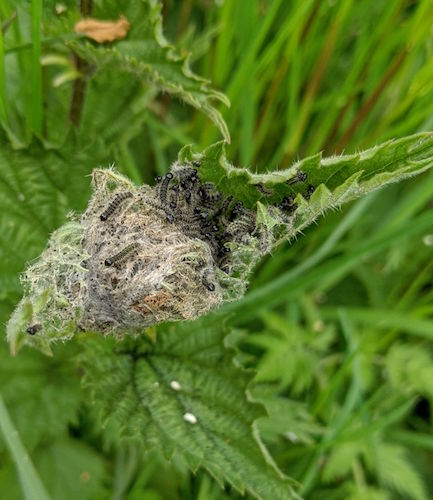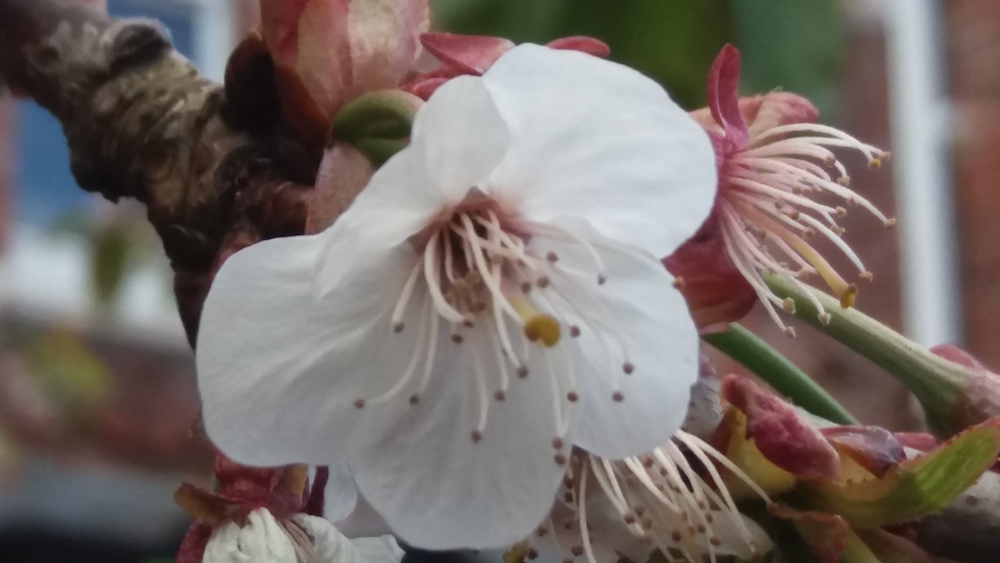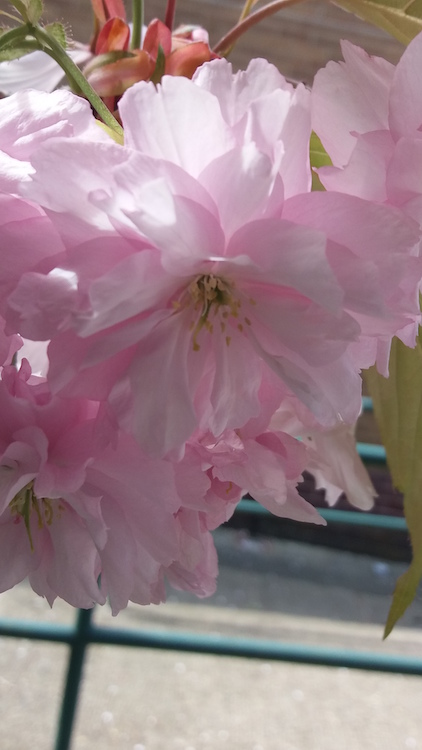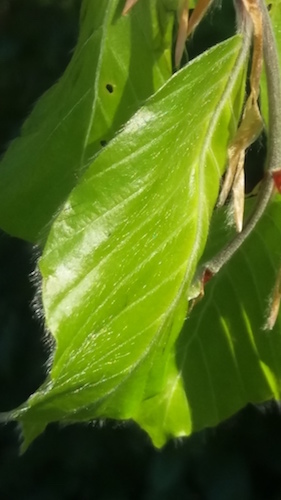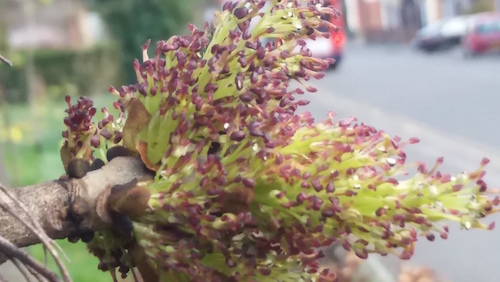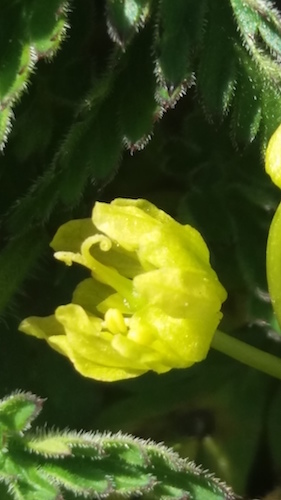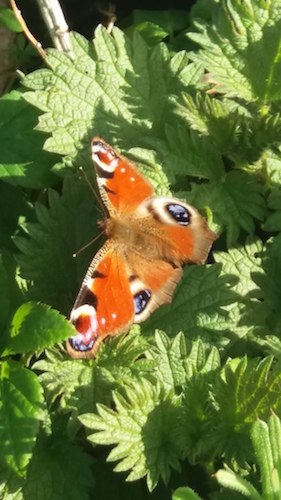Wild West End
1000 David Attenboroughs blog

1000 David Attenboroughs Week 17
Grasses, Butterflies and Bees
Did you know that some butterflies lay their eggs on grasses and their caterpillars eat grass leaves?
In the Orchard in Nuns Moor Park there are Meadow Brown and Speckled Wood butterflies whose caterpillars feed on grasses Cocksfoot and Yorkshire Fog.
Some Honey Bees collect the pollen from Cocksfoot grass and some Bumble Bees live in the tussocks made by Cocksfoot.

This is the best time of year to identify grasses. Yorkshire Fog looks very different as it grows, all the grasses in the picture are Yorkshire Fog!

Crested Dogs Tail is found on The Moor. The stem looks a bit like a dog’s tail.
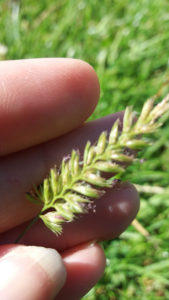
Cocksfoot grass flowering and afterwards
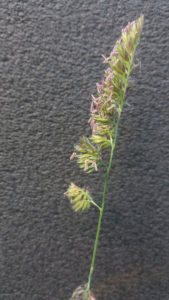
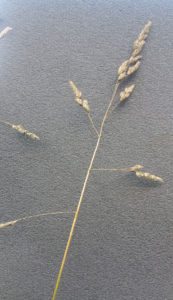
https://www.woodlandtrust.org.uk/trees-woods-and-wildlife/plants/grasses-and-sedges/cocksfoot-grass/
1000 David Attenboroughs – Week 14
Aphid Farming!
Did you know that ants keep aphids, a bit like humans keep cows?
They even sometimes milk them!
On the Tansy in my garden there are groups of aphids. When I look closely I can see that ants are there too. (See photo, the ant is circled.) The aphids are protected by the ants from predators such as lady birds. In return, the ants collect and eat the ‘honeydew’, which the aphids produce from eating the sugary sap of plants.
This relationship is called a symbiotic relationship, as it is beneficial to both the aphids and the ants.
https://www.thoughtco.com/aphid-herding-ants-1968237
1000 David Attenboroughs – Week 11
Sign up for 30 Days Wild and do one wild thing a day during the month of June!
This is run by the wildlife trusts and they have short guides on gardening, nature writing, nature activities with kids, wild bingo..nature photography, making elderflower cordial..
https://action.wildlifetrusts.org/page/57739/petition/1
Bat Surveying 2020 is now underway!
If you are out in the evenings please keep an eye out for bats!
..and record your sightings.
Bats can usually be seen from 20 minutes after sunset. There is a period of about half an hour when you can see them before it gets too dark.
Most of the bats in the Wild West End are one of the two pipistrelle species but there may be other species, particularly in Leazes Park.
The best time to see them is on warm evenings with little wind. They often follow hedge or tree lines or fly over grassy areas. You will see them darting about catching flying insects, which is what they feed on.
The sooner you see them after sunset, the closer their roosting (sleeping) place will be. Also, if you see them coming from a certain direction close to sunset, that may indicate their roost is in that direction, which is why we ask about the direction and time when you see the bats.
Finding bat roosts is an important part of the project so we can protect them.
Summer bat roosts are likely to be in buildings; bats will use buildings of all ages. Pipistrelle species bats are crevice roosting bats and so will be tucked up behind fascia boards, along wall tops, under lead flashing and under roof tiles/slates. Pipistrelles rarely use loft spaces.
Please record your sightings on the attached record sheet. The record sheet can also be found on the website https://greeningwingrove.org.uk/bat-surveying-2020/
or contact the project wildwestend@greeningwingrove.org.uk or phone/text 07410 944713 and I will drop some through your letterbox.
If you take a torch to help you write down your sightings and not trip over!..make sure to not shine it at the bats.
If you want to write down the temperature for when you were out, it can be found here (though not essential)
https://www.weatherhq.co.uk/weather-station/newcastle-3
Circle the weather conditions for each night you record bats on the record sheet.
Please return your record sheets to Ruth Hayward c/o The Time Exchange, 235 Stanton St, Newcastle upon Tyne NE4 5LJ once the office has reopened after lockdown. Please return all record sheets by mid October.
Safety tips
Take a friend – but stay 2 metres apart.
Take a mobile phone and make sure it is charged.
Only walk where you feel safe.
Bat Transects
The Project also has three transects/routes being walked once a month with bats being recorded using our new Anabat bat recorders. These transects are in Arthurs Hill, Spital Tongues and Fenham (covering the park behind Morrisons and the St. James and St. Basils’ Church Garden).
I did the transect in Arthurs Hill on Monday evening 1st June and found lots of bats in the part of Nuns Moor around the Play Centre.
Happy Batting!
Ruth
Feature pic of lioness and cubs “Cottars3” by Sam.Romilly, licensed under CC BY 2.0 CC
RH
1000 David Attenboroughs – Weeks 9 & 10
Plant Surveying and Biodiversity
Find a patch of grass.
With some sticks mark out roughly a metre square.
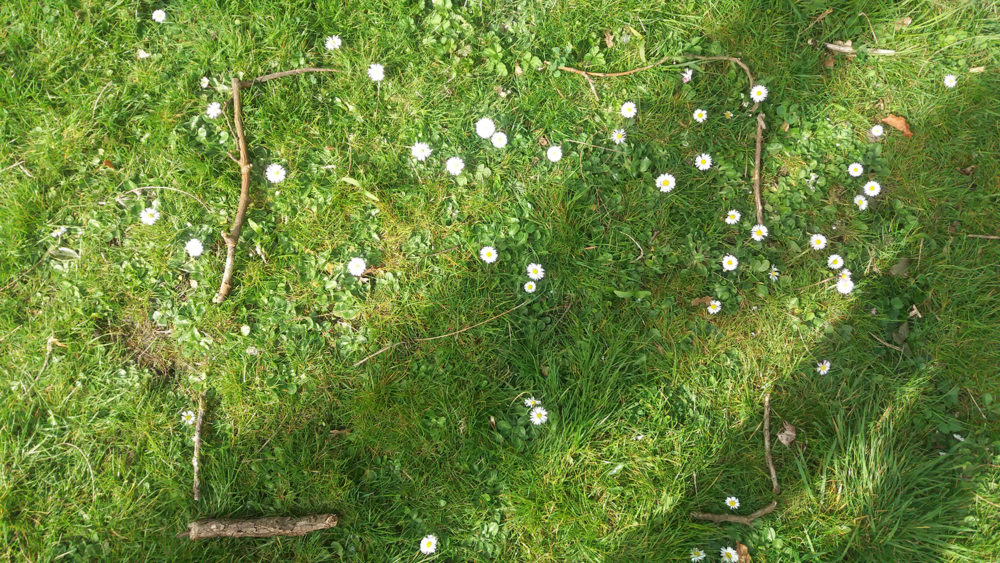
Look closely at what you can see in the square. Many of the things, especially if it is short grass, will be very hard to identify, so name what you can e.g. daisy and make up a name for the others. I used the name dandelion type leaf and grass (grasses are very hard to identify).
Then work out very approximately what percentage the plant covers, or if you want to start training as a plant surveyor 😊 then use the DAFOR scale. Writing down whether a plant is Dominant/Abundant/Frequent/Occasional/Rare
When I did this I had forgotten the words to use, see field notes photo!
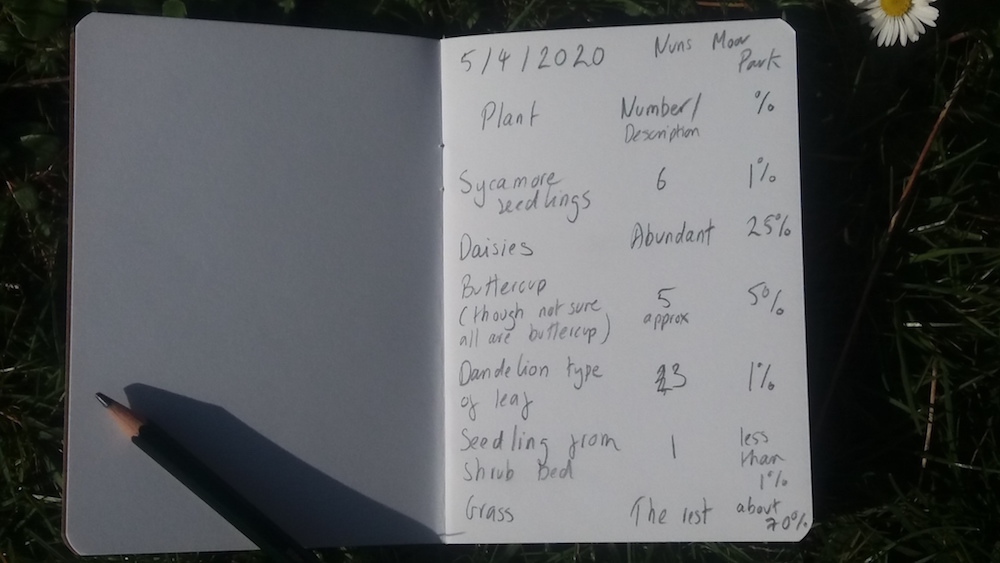
If your square has 100% of one plant then the species diversity is low (each different type of plant is a species). If it had a 100 different types of plants each taking up 1% of the space it would have very, very high species diversity. Another name for this is biodiversity.
Biodiversity on our earth is declining rapidly due to human activities and we need to reverse this process. We can make a small contribution to this by making our parks, green spaces and gardens more biodiverse.
One way we can do this is to allow grass to grow long during spring and summer. I stopped a verge being cut by the Council in Spital Tongues a month ago, and now it is full of flowers. (The yellow flower in the photo is Crosswort.) Could you leave a bit of your lawn or school playing field to grow?
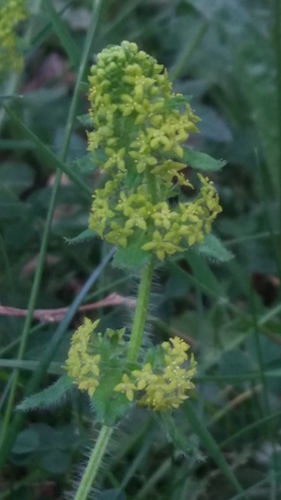
Useful links
https://www.globalissues.org/article/170/why-is-biodiversity-important-who-cares
http://www.botanicalkeys.co.uk/northumbria/dafor.asp
Feature pic of lioness and cubs “Cottars3” by Sam.Romilly, licensed under CC BY 2.0 CC
RH
1000 David Attenboroughs – Week 8
Butterfly Lifecycle and Be Nice to Nettles!
Find a patch of nettles that are in the sun.
Look at them carefully. Are there holes in the leaves made by a very hungry caterpillar? Are there any nettle leaves that have been made into a tent? See photos. Inside the tent are Red Admiral caterpillars. They make a tent to hide from the birds, then eat their way out of it!
You may find lots of little caterpillars all together protected by a silk web. These will be either Peacock or Tortoiseshell. Many thanks to Phil Rigby for the photo.
Don’t touch them as nettles sting.
Peacock, Tortoiseshell and Red Admiral caterpillars all need nettles (in the sun) so make sure you are Nice to Nettles and leave some in your garden, yard and green spaces.
https://www.ukbutterflies.co.uk/species.php?species=atalanta
https://bugwomanlondon.com/2017/02/08/wednesday-weed-stinging-nettle-part-two/
https://scottishwildlifetrust.org.uk/2019/05/be-nice-to-nettles/
Feature pic of lioness and cubs “Cottars3” by Sam.Romilly, licensed under CC BY 2.0 CC
RH
1000 David Attenboroughs – Week 7
Hi all,
This weeks’ task is …
Looking from a different perspective!
We spend all our time looking down at what is growing. So, find some plants that are one or two feet tall and look up at them from below. If doing this with children get them to pretend to be a spider or a snail!
What can you see?
Looking at the plants next to my step, I saw the veins of the leaves against the light and the hairs on the plant stems. I saw the seeds of the honesty developing in the seed pods.
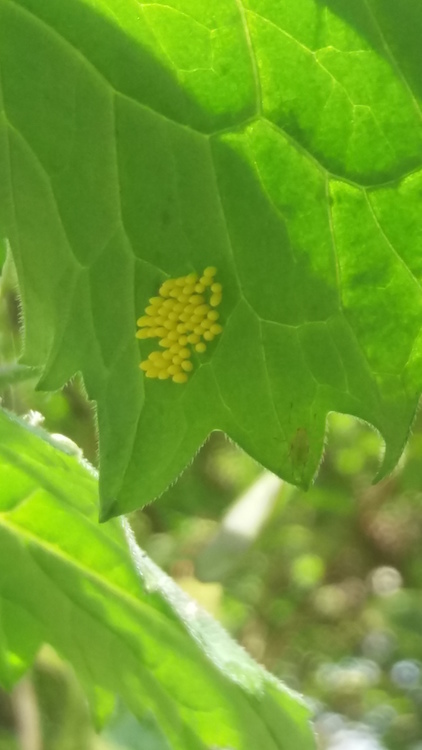
I saw butterfly eggs underneath an honesty leaf, cuckoo spit (which is produced by a bug called a froghopper, see photo) four spiders and a multitude of aphids under the rose leaves. Then, while writing this, a sparrow came and ate the aphids!
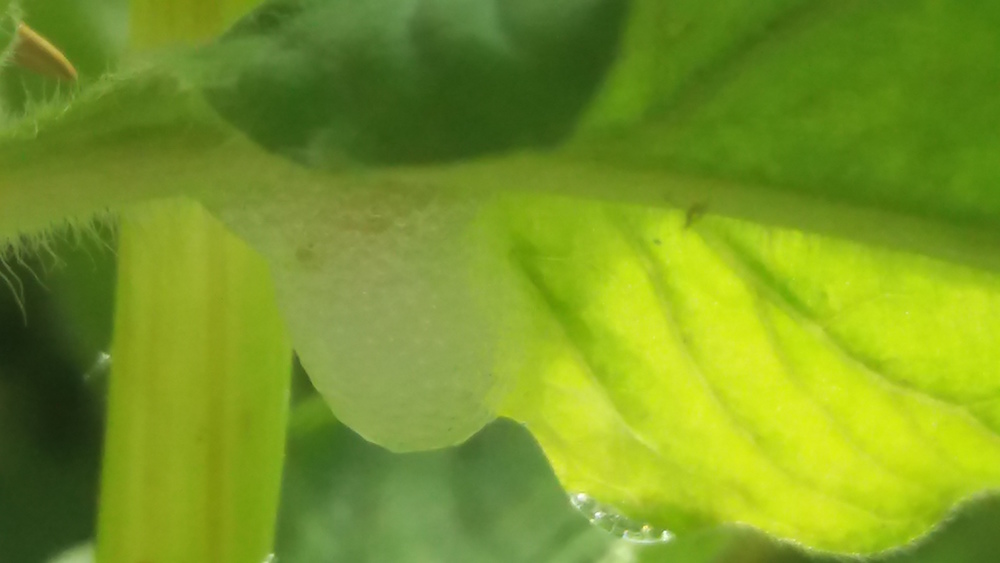
RH
1000 David Attenboroughs – Week 6
Task 1
Insects and flowers interactions and drawing!
So we are now in the season of flowers! Watch and see which flowers are visited by insects.
Look closely at the flowers and draw them. There are lots of flower shapes, from foxglove to primroses, to daisies (what we think of one flower is actually lots of little flowers all squashed together) to cow parsley (which are little five petalled flowers in groups, a bit like tiny umbrellas!) Look closely and draw some of the different types.
Insects can get nectar and pollen much more easily from single flowers (eg the white cherry) than from double flowers (eg the pink cherry).
Does your garden have lots of double flowers and not enough single flowers? This link has more info.
https://laidbackgardener.blog/…/double-flowers-bad-news-fo…/
Task 2
Smell the perfume of the Hawthorn
The Hawthorn, sometimes called Maythorn or just ‘May’ is in flower in nuns moor park. I think the scent is strongest when the flowers are young. If you look closely you will see the male parts of the flower, the anthers, are pink. Again, I think they are only pink when the flowers have just opened.
RH
Picture of Sir David Attenborough © International Monetary Fund 2019 – Used under Creative Commons Licence (CC BY-NC-ND 2.0)
1000 David Attenboroughs – Week 5
Would you like to be a David Attenborough?!
Take the first steps with Wild West End to learn the skills to be an ecologist.
During this time of coronavirus we have been sending out tasks, some of which can be done looking out the window, others from sitting on your step or in your back yard or garden, or if you are leaving the house, on your walk in the park (please keep apart from others and only go to the parks if the Government allows this).
We are now in Week Five and this week’s task is
- Look Up!
The housemartins and swallows are starting to return! I saw a swallow on Friday high up in the sky. These amazing birds travel all the way from southern Africa every year to nest here. They even fly over the Sahara Desert!
They nest on buildings- housemartins make nests out of mud, usually under the eaves. https://www.youtube.com/watch?v=yrmzbGXmvOQ
If you have a house martin nest you are very lucky 🙂💚 as they are very choosy about where to nest and have chosen your home after flying for 1000s of miles!
Wild West End is a two year project funded through the National Lottery Heritage Fund.
RH
Picture of Sir David Attenborough © International Monetary Fund 2019 – Used under Creative Commons Licence (CC BY-NC-ND 2.0)
1000 David Attenboroughs – Week 4
Would you like to be a David Attenborough?!
Take the first steps with Wild West End to learn the skills to be an ecologist.
During this time of coronavirus we have been sending out tasks, some of which can be done looking out the window, others from sitting on your step or in your back yard or garden, or if you are leaving the house, on your walk in the park (please keep apart from others and only go to the parks if the Government allows this).
We are now in Week Four and this week’s tasks are
- Listening Skills
Stop and listen to the birds singing. Try and pick out one bird song from another one. Can you see the bird that is singing? Can you tell whether it is a similar size to a robin, or bigger or smaller?
When you get back to a computer look at this site and see if you can find the bird song you heard. https://www.rspb.org.uk/birds-and-wildlife/wildlife-guides/identify-a-bird/ It is a brilliant website for identifying bird calls – makes it really simple for complete beginners! - Touch!
In the park the new beech tree leaves are unfurling. Reach up and touch the new leaves. They are very soft and delicate with soft hairs along them. Even the new twigs are soft!
As Spring progresses go and touch them again. They will gradually get tougher, developing more waxy layers and thicker cell walls, so they are less easily damaged and don’t dry out. The new soft twigs will become more woody, ‘or lignify’ as it is known scientifically.
If you can’t go to the park, other trees also have new delicate leaves coming through, though beech leaves are particularly soft (see pic below). Check out the new leaves on your nearest tree. - Bonus Task – Smell
When I was in the park today, along the edge of the allotments, the blossom trees are out. I think they are wild cherry. They smell lovely.
Wild West End is a two year project funded through the National Lottery Heritage Fund.
RH
Picture of Sir David Attenborough © International Monetary Fund 2019 – Used under Creative Commons Licence (CC BY-NC-ND 2.0)
1000 David Attenboroughs – Week 3
Hi Wild West Enders,
Welcome to Week 3 of 1000 David Attenboroughs!
1. Botany
Find the flowers on the sycamore and ash trees in the park.
Did you know that nearly all trees have flowers? (except conifers) but they are very small. The flowers on the sycamore and ash trees are out now.
Both male and female ash flowers are purple. The picture is a female flower. Ash trees can be male, female or both! If you find a male ash tree flower that has been blown down, take it home, and after one day it will produce yellow pollen.
The yellow flower is a sycamore flower I found on the ground.
2. Butterfly Lifecycles
When the sun comes out, can you see a Peacock (pictured below), a Red Admiral, Tortoiseshell or a Brimstone butterfly? These amazing fragile creatures survive the winter as adults hiding in holes in trees, in woodpiles, sheds or amongst ivy or bramble.
As it warms up in March and April they come out to feed, mate and lay their eggs.
To protect butterflies we need to make sure they have what they need for all their different life stages:
- Places to hibernate, like ivy and holes in trees or a damp shed!
- Flowers to feed on when they come out of hibernation such as dandelions and fruit tree blossom.
- The plants to lay their eggs and for their caterpillars to feed on, for Peacocks, Red Admirals and Tortoiseshells, this is the humble nettle. But it needs to be nettles in the sun 😊
- And nectar plants in the summer and autumn for the adult butterflies.
https://www.nationaltrust.org.uk/features/how-to-spot-hibernating-butterflies-this-winter
RH
Picture of Sir David Attenborough © International Monetary Fund 2019 – Used under Creative Commons Licence (CC BY-NC-ND 2.0)
1000 David Attenboroughs – Week 2
Would you like to be a David Attenborough?!
Take the first steps with Wild West End to learn the skills to be an ecologist.
During this time of coronavirus we have been sending out tasks, some of which can be done looking out the window, others from sitting on your step or in your back yard or garden, or if you are leaving the house, on your walk in the park (please keep apart from others and only go to the parks if the Government allows this).
So, week 2 tasks!
1. Observation Skills – Animal Behaviour
Sit still for 10 minutes in the park, garden or on your doorstep and wait to see if any birds appear. Watch what they are doing. Are they collecting twigs for their nests, or eating insects on the tree branches? Or are they looking for food on the grass or amongst leaves?
If there are no trees outside your house look at the ridge of the roofs or around the gutters. In the West End I often see seagulls sitting in a line on church roofs and starlings washing in gutters!
Watching a birds’ behaviour can help you work out what bird it is. For example, blackbirds look for food on the ground and long tailed tits eat insects on trees.
2) Observation and identification skills
The first lady birds are coming out in the Sun 😊
Can you spot any ladybirds? Can you identify what type they are? This guide will help.
http://www.surfbirds.com/ladybird-guide.html
Wildlife tip; ladybirds, lacewings and some moth and butterfly caterpillars shelter in hollow stems over winter, so try not to tidy them till after the last danger of frost (Mid April in Newcastle). Other insects over winter amongst dead leaves at the base of plants so avoid tidying these too.
Let me know how you do!
Wild West End is a two year project funded by the National Lottery Heritage Fund
RH
Picture of Sir David Attenborough © International Monetary Fund 2019 – Used under Creative Commons Licence (CC BY-NC-ND 2.0)
1000 David Attenboroughs – Week 1
Would you like to be a David Attenborough?!
Take the first steps with Wild West End to learn the skills to be an ecologist.
During this time of coronavirus we have been sending out tasks, some of which can be done looking out the window, others from sitting on your step or in your back yard or garden, or if you are leaving the house, on your walk in the park (please keep apart from others and only go to the parks if the Government allows this).
So, the first tasks!
1. Botany/Habitats
Are there any old brown stems from last year still standing? Draw the stem and describe it. Is it hollow? Is it round, does it have 4 sides, or a different number? Does it still have seed heads?
Wildlife tip: ladybirds, lacewings and some moth and butterfly caterpillars shelter in hollow stems over winter, so try not to tidy them till after the last danger of frost (mid-April in Newcastle). Other insects over winter amongst dead leaves at the base of plants so please don’t tidy these either.
2. Listening Skills
Listen to the birds. Can you listen for and tell apart three different bird calls? And then for an additional challenge, can you see the birds making the calls? You will need to sit very still and quietly to see some birds.
3. Observation Skills/Animal Behaviour
The first bees are out! Sit and watch a bee for 10 minutes. What is it doing, what plants does it visit?
Let me know how you do! E: wildwestend@greeningwingrove.org.uk
Wild West End is a two year project funded by the National Lottery Heritage Fund
RH
Picture of Sir David Attenborough © International Monetary Fund 2019 – Used under Creative Commons Licence (CC BY-NC-ND 2.0)


